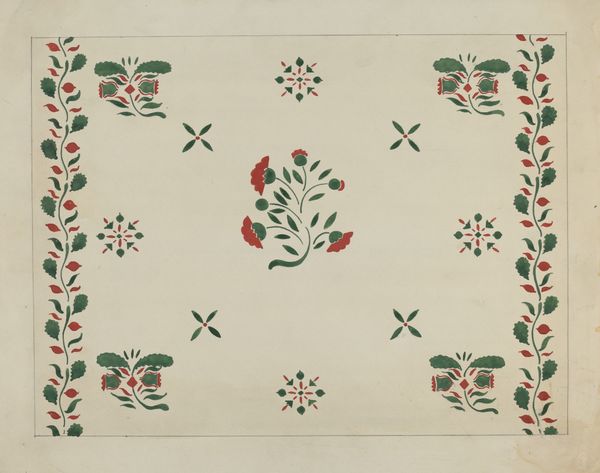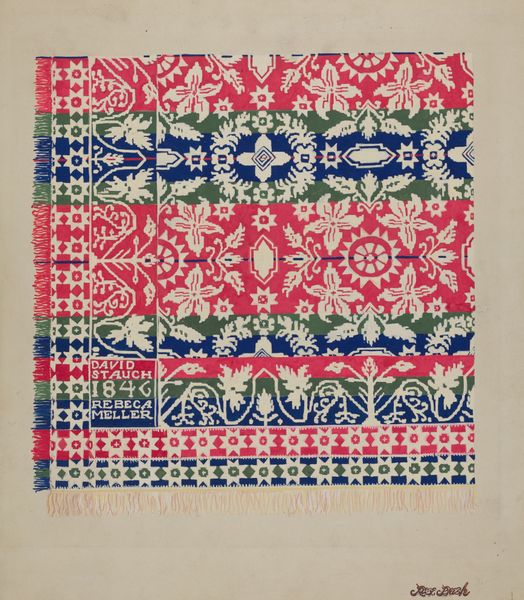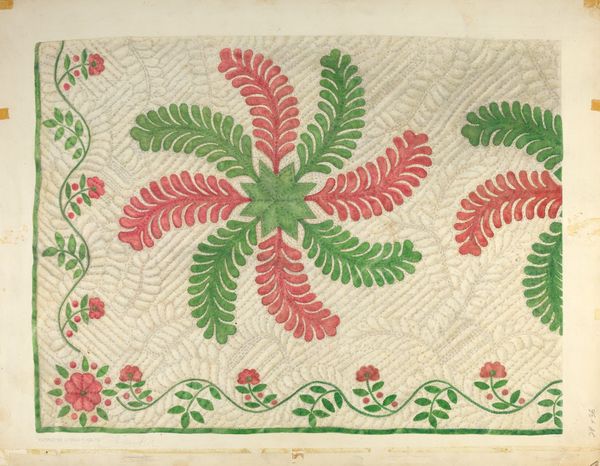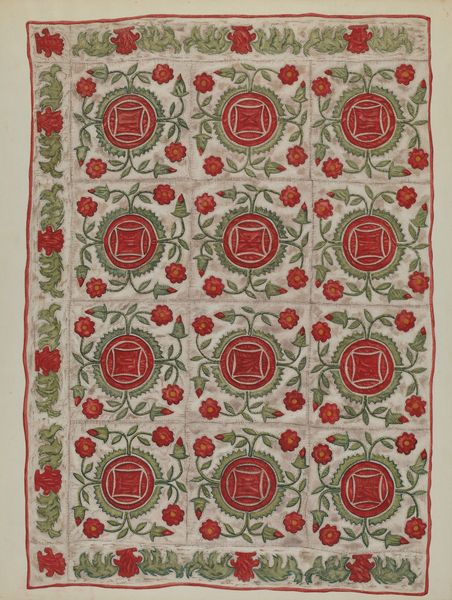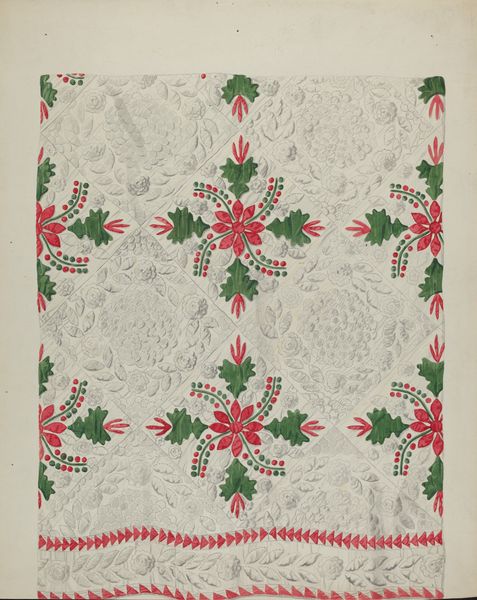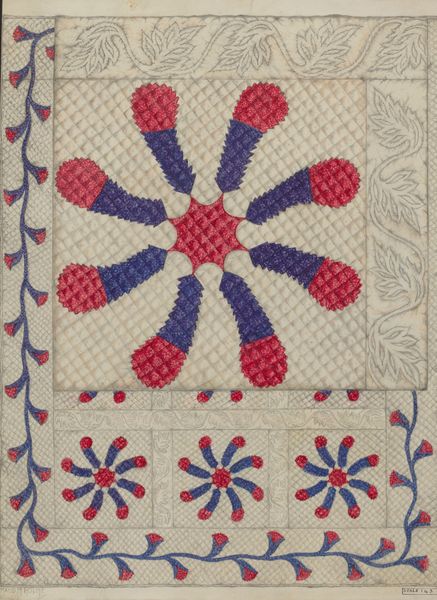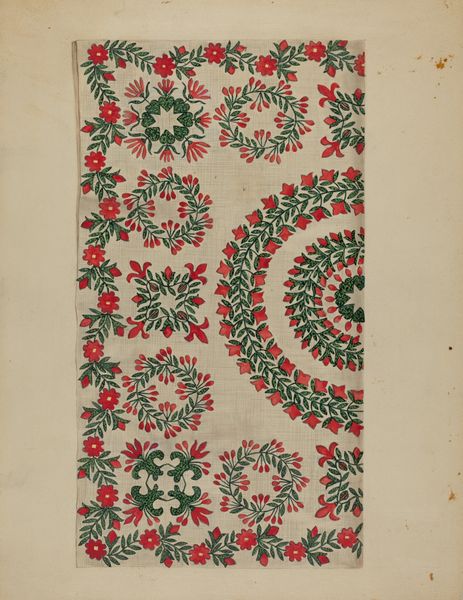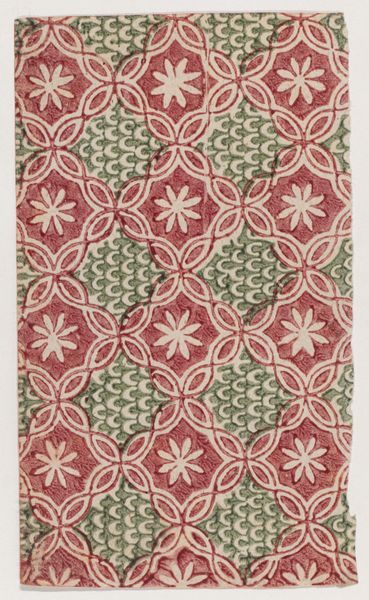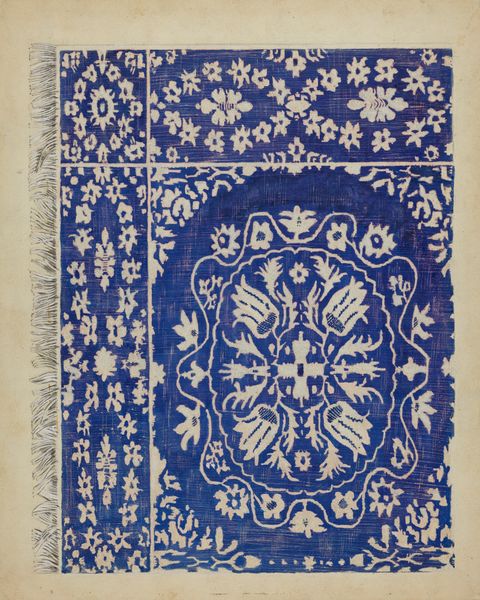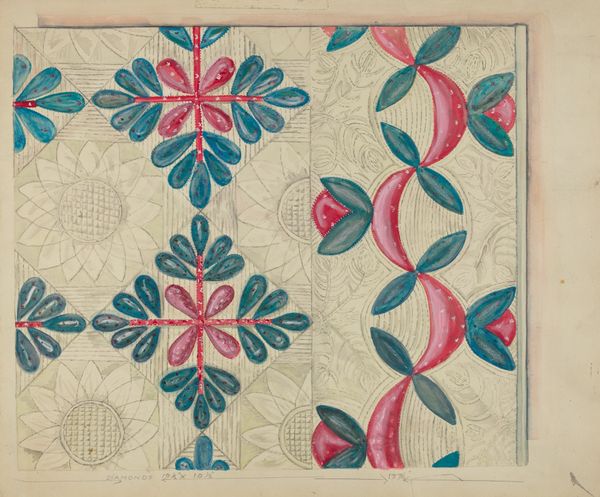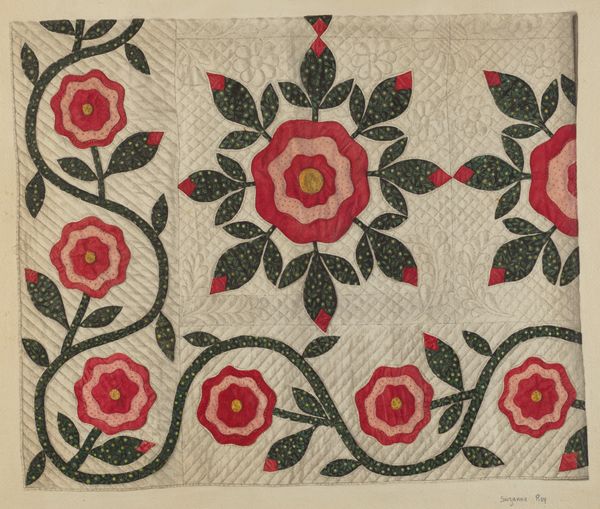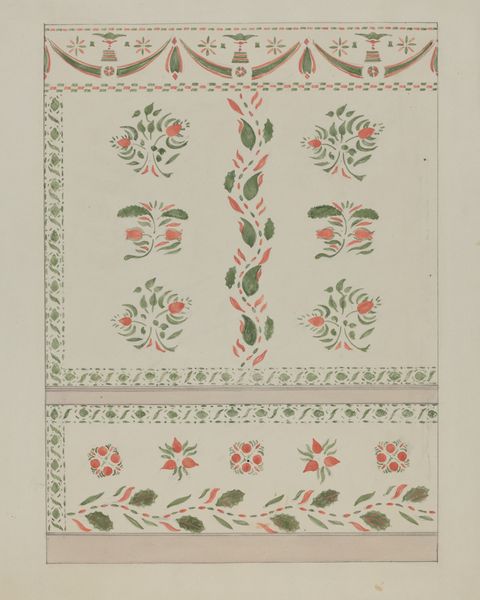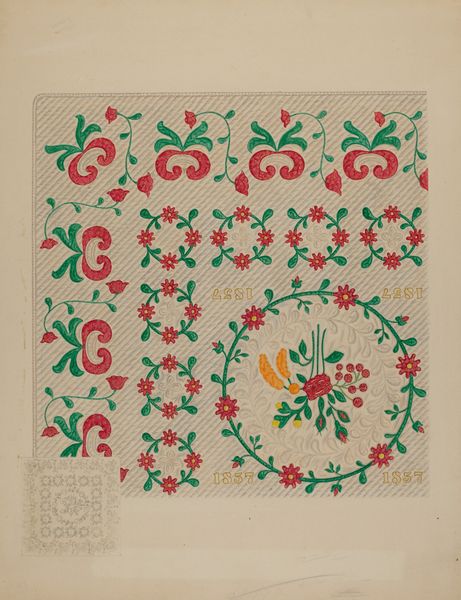
drawing, textile
#
drawing
#
textile
#
geometric pattern
#
organic pattern
#
geometric
#
pattern repetition
Dimensions: overall: 35.9 x 25.9 cm (14 1/8 x 10 3/16 in.) Original IAD Object: 7 1/2" high; 8" wide
Copyright: National Gallery of Art: CC0 1.0
Curator: Before us we have a piece entitled "Coverlet," made around 1936 by Cornelius Frazier. It appears to be a study, or a design rendered on paper, possibly for a woven textile. Editor: Immediately, I’m struck by the almost dizzying effect of the pattern. The contrasting colors – those reds, greens, and blues – combined with the repeated geometric and organic forms create a visual rhythm that’s quite energetic, wouldn't you say? Curator: Indeed. I find it rather interesting how Frazier balances these elements. Observe the meticulous repetition of the floral and geometric motifs, each form delineated with distinct cross-hatching. The interplay between positive and negative space gives depth and texture to the design. Editor: And considering the context of its creation, mid-1930s America, this piece perhaps speaks to broader narratives of craftsmanship, utility, and artistic expression during times of economic hardship. Were textiles a common mode of art for marginalized communities at the time? Curator: Precisely. Analyzing the construction, we can see it’s clearly meant to mimic woven structure. Each little intersection forms a new micro-pattern, a kind of infinite divisibility. The organic floral designs contained within precise geometric boundaries point to his deep engagement with structuralism, creating an interesting conversation. Editor: From a historical perspective, the ‘Coverlet’ becomes more than just an aesthetic exercise. It is speaking to labor, to value of handmade traditions, and offers some insight into Frazier’s life and perhaps to the lives of many African Americans within that period. It’s a visual document loaded with meaning. Curator: A loaded visual document—I concur. The success of this piece rests on the meticulous execution and the inherent push and pull of form; a visual equation expertly resolved. Editor: Ultimately, "Coverlet" gives an artistic viewpoint.
Comments
No comments
Be the first to comment and join the conversation on the ultimate creative platform.
